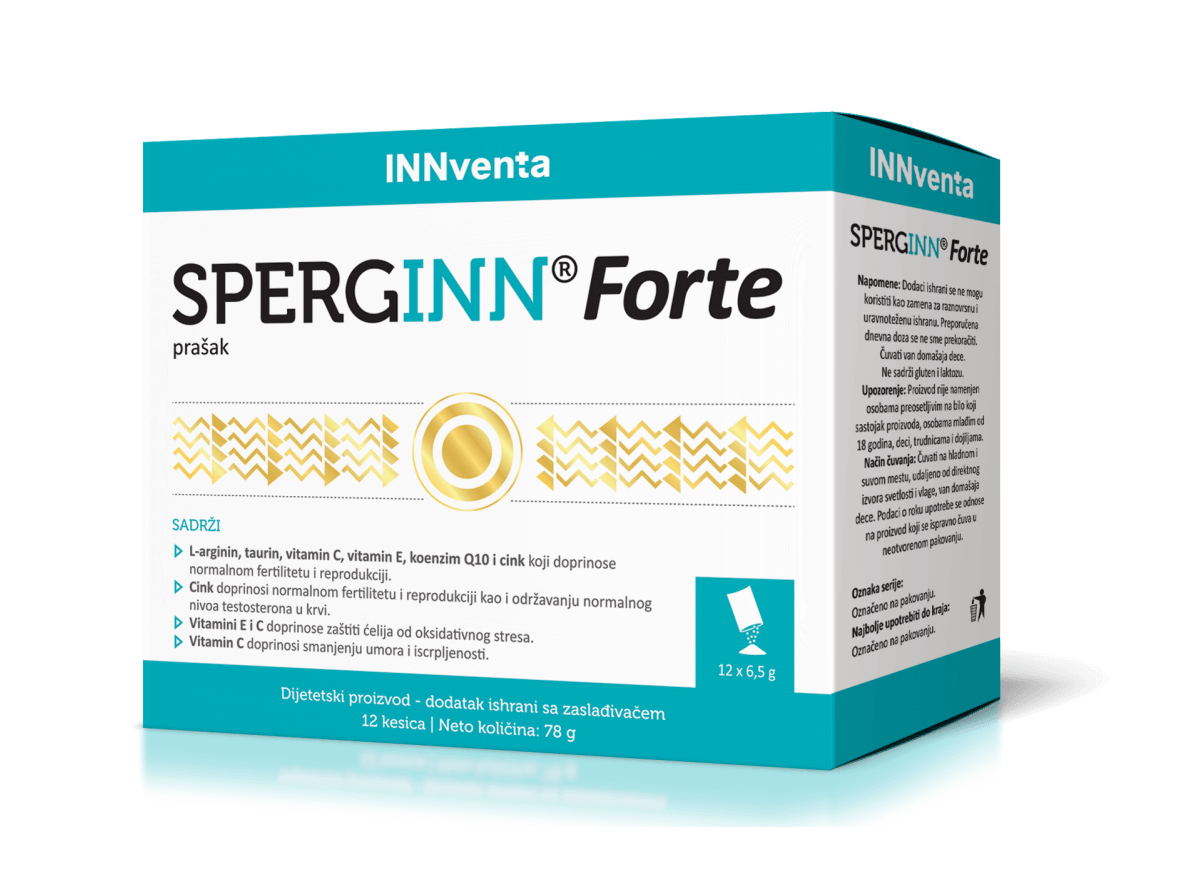
SPERGINN® Forte

SPERGINN® Forte is a dietary supplement containing L-arginine, taurine, vitamin C, vitamin E, coenzyme Q10 and zinc. Zinc contributes to normal fertility and reproduction, as well as maintaining normal testosterone levels in the blood. Vitamin E and C contribute to the protection of cells from oxidative stress. Vitamin C helps reduce fatigue and exhaustion.
SPERGINN® Forte in a product sachet contains active ingredients which contribute, by their synergistic action, to the increase of count, motility and quality of sperm, as well as efficient elimination of erectile dysfunction symptoms.
- High bioavailability of active substances
- High absorption of lipophilic active substances
- Produced with patented technology
- Complementary therapeutic effect
- High adherence and compilance of patients
- Maintenance of high concentration of active component in the body throughout the day

In which conditions is the use of product SPERGINN® Forte?
-
In treatment of male infertility:
- reduced sperm count, motility or quality
- after surgical treatment of varicocele
- as an adjuvant therapy to hormone therapy
- In the treatment of erectile dysfunction
Why SPERGINN® Forte?
- Strong formulation for strengthening of male reproductive health
- Proven increase of sperm quality, count and motility
- Contributes to fertility and maintenance of normal testosterone level in the blood
- Complementary therapy to hormone therapy
- Protection of cells from oxidative stress
- Comfortable dosing, one a day

What does SPERGINN® Forte contain?
Active ingredients: | 1 sachet |
|---|---|
L-arginine | 2500 mg |
Taurine | 500 mg |
Vitamin C (L- ascorbic acid) | 180 mg |
Coenzyme Q10 | 200 mg |
Vitamin E (D-α- tocopheryl acetate) | 30 mg |
Zinc (zinc-L-pidolate) | 1,5 mg |
Method of use
Adults: One sachet a day. Dissolve the content of a sachet in a glass of water (200 ml), stir well and drink.
Notes: Dietary supplements cannot be used as a substitute for a varied and balanced diet. Recommended daily dose must not be exceeded. It does not contain gluten and Iactose.
Package:
12 sachets.